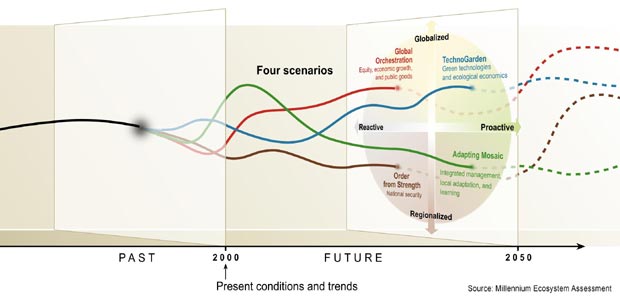


Box 4.1. Millennium Ecosystem Assessment ScenariosThe MA developed four scenarios to explore plausible futures for ecosystems and human well-being. The scenarios explored two global development paths (globalized versus regionalized societies and economies) and two different approaches for ecosystem management (reactive and proactive). In reactive management, problems are addressed only after they become obvious, whereas proactive management attempts to maintain ecosystem services for the long term. These scenarios were selected to explore contrasting transitions of global society up to the year 2050.
 Source: MA Related publication:
Other Figures & Tables on this publication: Figure 1.1. Schematic Description of Development Pathways in Drylands Figure 1.2. Land Uses in Drylands Figure 4.1. Key Desertification-related Findings of the MA Scenarios Appendix A: Present-day Drylands and Their Categories Box 7.1Droughts in the Sahel Region: Lessons Learned and Knowledge Gaps Figure 7.1. Overlap of Urban Areas with the Four Dryland Categories |